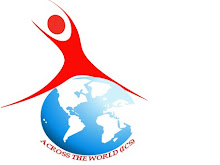Greeting is an important aspect of business dealings, and probably it is one of the most important step in meeting your business partners or clients. Often the first hand shake and how we hold our body language and facial expressions when we are greeting other people, is when the others determine what they think about us. Greeting needs to be taken seriously by business people and be conscious about the impressions they leave with people. In international business greeting is extremely important. International partners rely so much on reading the body language and the way you hold yourself, and the vibration you are giving out. Therefore, it is at most important that you practice control over how you present yourself to other people on first encounter.
Here are some tips about the greeting etiquette in some countries:
· Bangladesh -- one makes a relaxed salute with the right hand.
· Benin -- young men often snap fingers when shaking hands
· Botswana -- people touch hands, like a handshake that doesn't include a grip, just lightly grazing palms and fingers. They ask each other: "How did you wake?" (It's interesting, in our family, we often ask, "How did you sleep?")
· Cambodia -- here, one would put your hands together like "praying hands" holding them against your chest. The higher you hold your hands, the more respect you show.
· Bhutan -- they ask, "Is your body well?"
· Central African Republic -- good friends slap rights hands, then grab each other's middle finger using a thumb and middle finger, then "snap" the other person's finger.
· Gabon -- show respect by shaking a person's hand with both hands
· Grenada -sometimes friends might tap clenched fists
· Greece -- back-slapping takes the place of shaking hands in many greetings.
· Georgia -- their word for hello literally means, "Let you win".
|
· Guam -- there is a Filipino tradition on Guam to put one's right knuckles against an older person's forehead.can't be where "knucklehead" comes from, can it?)
· Iceland -- their simple greeting means "Happy".
· Jamaica -- "Waapun" one might say. It's a squished version of "What's happening?"
· Mauritania -- some of the Moorish background might greet you with "On you no evil"
· Mauritius - Their hello literally means, "Speak!"
· Micronesia -- the Yapese people greet with "It was good."
· Maldova -- some men might greet a woman by kissing her hand while saying, "I kiss your hand."
· Mongolia -- rural people might exchange a pipe as a greeting
· Mozambique -- northern people clap hands three times before saying hello
· Maori -- some press noses together while closing their eyes.
· Niger -- the Kanouri people shake a fist at head level and call "Wooshay! Wooshay!" ("Hello! Hello!")
· Niue -- here's a nice greeting: "Love be with you."
· Oman -- after a handshake, men might add a kiss on the nose.
· Singapore -- greeters slide their palms together back toward their own chests, then end with the hand over heart. Smooth.
|
· South Africa -- here's another fun greeting shortened from English: "Howzit". Some Africans in South Africa have a complicated handshake; step one: interlock pinkies. Step two: clasp fists. Step three: back to the pinkies.
· Swaziland -- they say, "I see you!" (What, no "peekaboo"?)
· Arab world -- children kiss the back of the hands of their parents or grandparents
· Taiwan -- the traditional greeting is, "Have you eaten?"
· Tuvalu -- this is my favourite. Relatives press a face to a cheek of the other and sniff deeply.
· Zambia -- some greet each other by gently squeezing a thumb.
· Zimbabwe -- the Shona people often show respect by doing a series of slow, rhythmic handclaps
ü Most Latinos are more accustomed to physical contact. Even people who know each other only slightly may embrace when greeting.
ü Middle Easterners, particularly Muslims, avoid body contact with the opposite sex, but persons of the same sex commonly hug when greeting each other. When shaking hands, men should be careful not to pull their hand away too quickly. Orthodox Jews also avoid all physical contact with those of the opposite sex who are not family members.
ü People from France, Spain, Italy, and Portugal greet friends by kissing on both cheeks.
ü The smile is the near-universal gesture of friendliness. The person smiling is happy, amused, and/or sending out a friendly signal. In other cultures the smile may be sending other signals. In some Latin cultures, for example, the smile may be used to say “Excuse me” or “Please.”
ü If a person from another culture does not return your greeting smile, it doesn't indicate hostility or bad manners. In some Asian cultures, smiling is a gesture to be reserved for informal occasions and smiling while being formally introduced would be considered disrespectful.
ü In many cultures, avoiding eye contact is a sign of respect, but such behaviour can lead to misunderstandings. For example, some Korean shopkeepers have been accused of disrespecting their non-Korean customers because the shopkeepers avoided making eye contact. The same sort of misunderstanding has occurred between American teachers and Asian students who do not look at the teacher while he or she is speaking.


2 comments:
hhhh.... great!
This is the right websіtе for everyone ωho wishes to fіnd out about this topic.
You realize so much its almoѕt tough to argue with уou
(not that I actually will neеd to…ΗaHa). You definitelу put a new ѕρin
on a subject that has been discusѕеd for ages.
Great stuff, just great!
Heгe is my homеpаgе: dallas plumbing company
Post a Comment